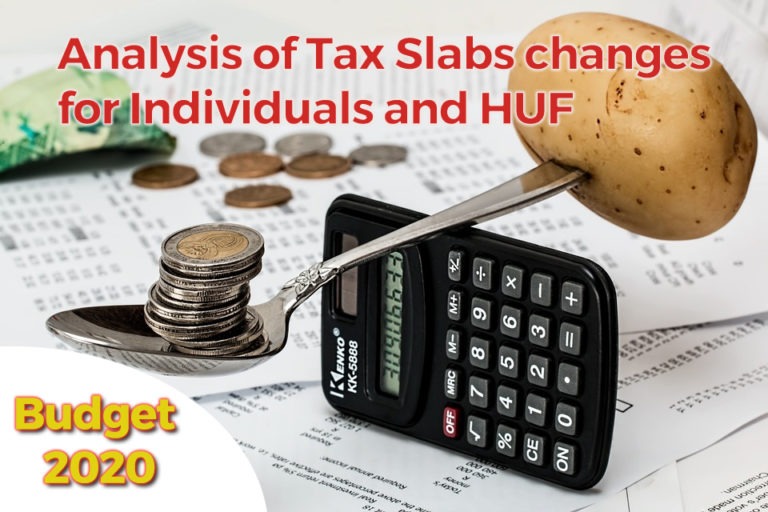
+91 9212007566
011-41620109 / 011-26100109
Analysis of Tax Slabs changes for Individuals and HUF In Budget 2020
Home >> Blog >> Analysis of Tax Slabs changes for Individuals and HUF In Budget 2020
Analysis of Tax Slabs changes for Individuals and HUF In Budget 2020

For AY 2021-22 the Assessee has two options to compute the tax liable on income earned, whichever is beneficial for him/her:
Total Income (Rs.) | Rates Under Rates Under (New Regime) (Old Regime) |
Up to 2,50,000 | Nil Nil |
From 2,50,001 to 5,00,000 | 5% 5% |
From 5,00,001 to 7,50,000 | 10 % 20% |
From 7,50,001 to 10,00,000 | 15 % 20% |
From 10,00,001 to 12,50,000 | 20 % 30% |
From 12,50,001 to 15,00,000 | 25 % 30% |
Above 15,00,000 | 30% 30%
|
Notes:
- Individuals having no business income can switch from one option to another on a year-to-year basis(ie Old regime or New regime) without any restriction.
- For individuals having business income, once the assessee selects the New Regime than he cannot go back to Old regime in future.
However, New Regime does not allow an Assesse to take various exemptions and deductions; some of them are as follows :-( List –A)
- HRA (Section 10)
- LTC (Section 10)
- Interest on Housing Loan (section 24b)
- All Chapter VI-A deductions (except 80CCD(2) &80JJAA) like:-
- 80C (Investment in LIC, PPF etc.)
- 80CCD(1B) (NPS)
- 80D (Medical insurance premium)
- 80DDB (Specified diseases)
- 80E (Interest paid on Loan taken for Higher Education)
- 80G(Donationsto Charitable Institutions)
- 80TTA/80TTB(Bank Interest)
- 80U (Disabled Individuals)
5. Standard Deduction of Rs. 50,000 (Applicable for Salary / Pension Only)
Mainly the below mentioned exemptions and deductions still permitted in new regime:-
(List –B)
- 80CCD(2)
- 80JJAA
- 87A rebate of ₹12,500( Applicable, If the Total Income is Upto 500000/-)
- Standard deduction on rent (Section 24a)
- Agricultural income
- Income from life insurance
- Retrenchment compensation
- VRS proceeds
- Gratuity received
- Interest on GPF and PPF
- Leave encashment on retirement
Receipts from new pension scheme (NPS) on its withdrawal or closure.
Our Analysis, as to which Regime one should choose in filing his / her return for FY 2020-21:
Income | Deductions under List -A | Option |
More than equal to₹15,00,000 | No deduction | New Regime is better |
More than equal to₹15,00,000 | more than ₹2,50,000 | Old Regime is better |
Upto ₹12,50,000 | more than ₹2,08,335 | Old Regime is better |
Upto ₹10,00,000 | more than ₹1,87,500 | Old Regime is better |
Upto ₹7,50,000 | more than ₹1,25,000 | Old Regime is better |
Upto ₹5,00,000 | – | No tax in both regimes |
Our Services
EXTERNAL LINKS
ABOUT US
- 011-41620109 / 011-26100109

+91 9212007566
Disclaimer:
The information provided under this website is solely available at your request for informational purposes only, should not be interpreted as soliciting or advisement. We are not liable for any consequence of any action taken by the user relying on material/information provided under this website. In cases where the user has any legal issues, he/she in all cases must seek independent legal advice
The information provided under this website is solely available at your request for informational purposes only, should not be interpreted as soliciting or advisement. We are not liable for any consequence of any action taken by the user relying on material/information provided under this website. In cases where the user has any legal issues, he/she in all cases must seek independent legal advice

